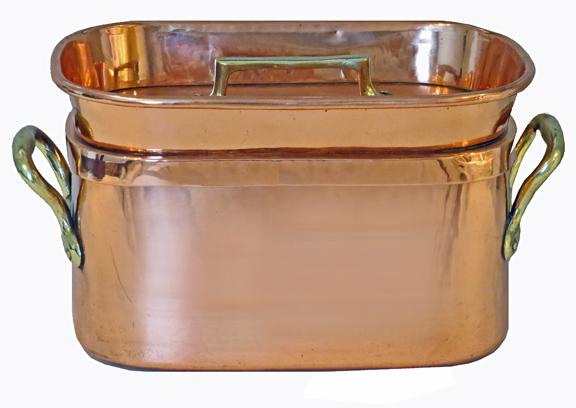
Poaching is not boiling. Boiling is way too aggressive. Rather, in poaching, the liquid should be kept at a very low simmer – no bubbles rising, just enough to make it shiver. The result is a delicate flavor, perfect for showcasing delicious sauces.
A great example is the poached egg, so versatile that in 1903 Escoffier included 141 variations in his monumental cookbook, Ma Cuisine. Earlier, in 1894, the perfect cure for a hangover had been created by Lemuel Benedict when he topped a toasted English muffin with ham, poached eggs and creamy Hollandaise. Delicious.
It’s not just eggs that can be poached. We found an ancient Roman cookbook that included a recipe for Poached Dumplings of Pheasant, using water seasoned with fermented fish sauce called garum, “ancient Rome’s equivalent of ketchup”.
Then we have recipes for the more familiar poached fish. Paired with elegant sauces like Bechamel, Bordelaise – with dry red wine, bone marrow, butter and shallots, or Diplomat – a fish stock enriched with cream, brandy, lobster butter and truffles, these dishes are the essence of French cuisine. Our favorite is Julia Child’s Poached Salmon with Cucumber Sauce – fast, simple, healthy and above all, delicious.
It’s no surprise that the French devised the perfect copper pots to enhance the techniques for this most simple method of cooking: The right shape for lobster and shellfish with this pot from Brittany (above), a perfect oval to encase fish (below left) or, the egg poacher, with low sides for easy access and wide shape to accommodate multiples at one time (below right).
Tonight, we’re trying Prosper Montagne’s 1938 recipe for Oeufs Aladin – poached eggs on a mound of saffron risotto, garnished with sweet peppers and splashed with tomato sauce. Are you hungry yet?
Poacher from Brittany
Size: 15″ Wide X 9″ High
